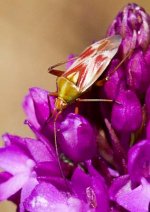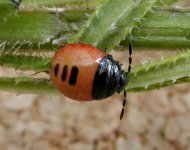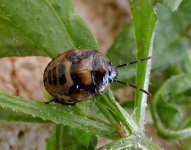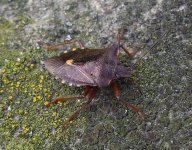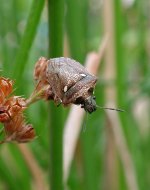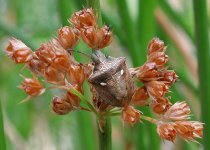harry eales
Ancient Entomologist
I came across this handsome shield bug in the garden this afternoon. Im pretty sure it's a Hawthorn. It's quite a bit bigger than the green shield bugs I often see. I also occasionally see sloe bugs. This one is new in the garden and a real beauty!
Nerine
Hello Nerine,
Your correct, it is a Hawthorn Shieldbug, there's plenty of nymphs around at present if you keep your eyes open.
Harry




